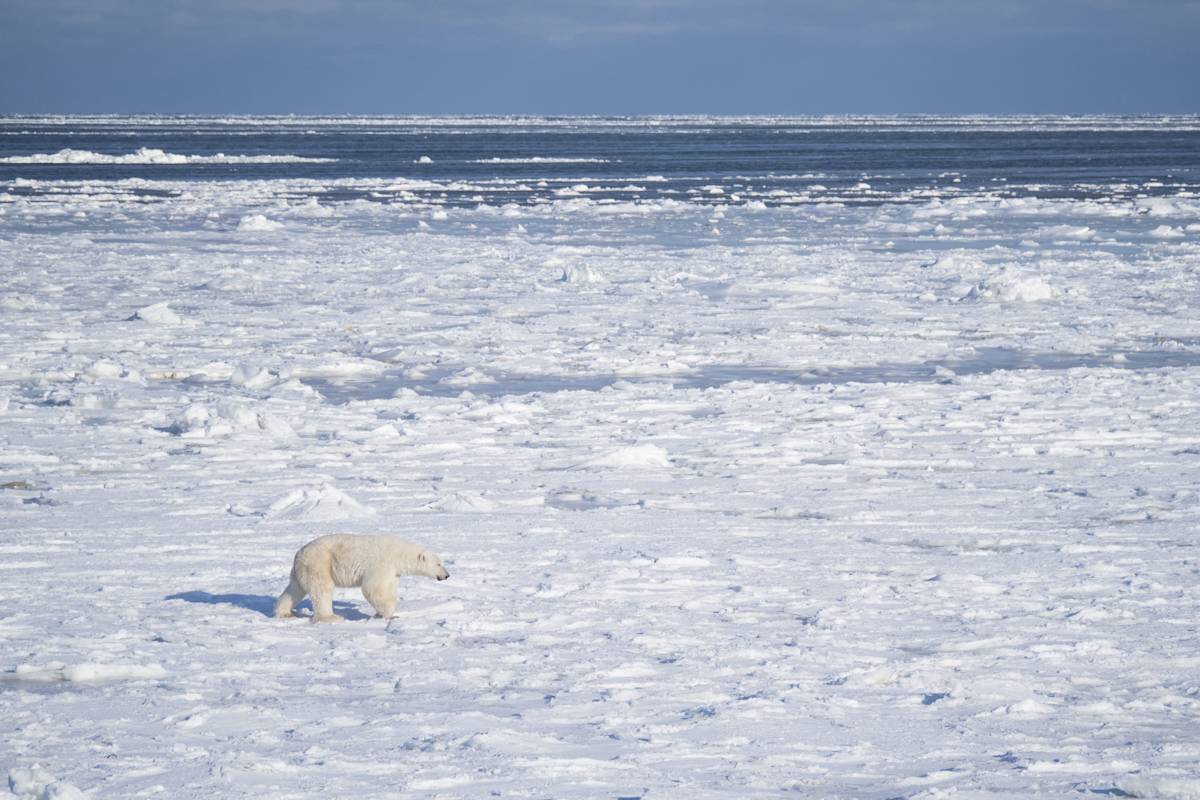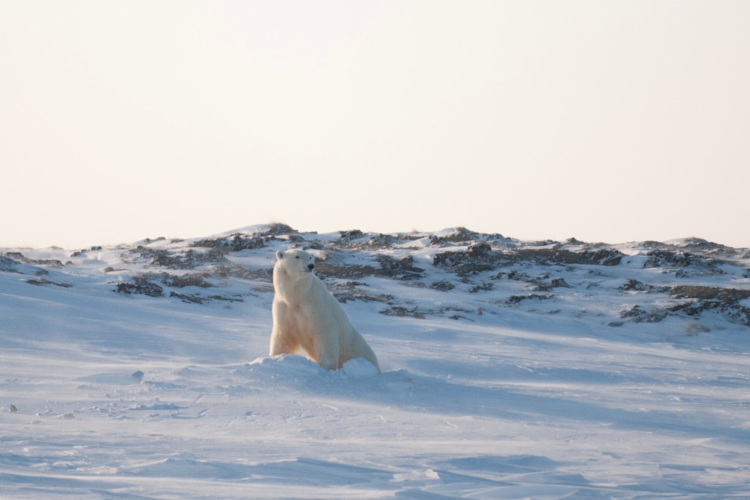
Photo: Kt Miller / Polar Bears International
How Do Polar Bears Avoid Snow Blindness?
By Dr. Thea Bechshoft, Staff Scientist
MINS
23 Mar 2022
Field work in the Arctic often involves sea ice, snow, open ocean, and 24-hour sunlight – a setup that lends itself to stunning nature views, but also potentially sun-damaged corneas! Also known as snow blindness, this is a medical condition caused by overexposure of the yes to the sun’s UV rays and is most often experienced in areas with highly reflective surfaces such as snow, ice, and water. Luckily for humans, it’s easy to prevent by using protective gear. Also, damage from short-term UV exposure typically heals on its own within a few days once you remove yourself from the sun and rest your eyes.
Based on personal experience, the healing process from sun-damaged corneas feels like having itchy, gritty, photo-sensitive eyes: unpleasant enough that my field gear now always includes multiple pairs of quality sunglasses, something that people in the North learned centuries ago. Carved from bone, with narrow slits for the eyes, snow goggles have been found in Inuit archeological sites up to 2,000 years old.
Polar bears spend their entire lives in the highly UV-reflective Arctic environment, without snow goggles, which begs the question: how do they avoid snow blindness? The short answer: we do not know. However, there are scientific studies involving other mammals that may well provide a few clues.
Vitamin C
Research has shown the cornea of some mammals to contain high levels of ascorbic acid, a form of Vitamin C that protect the cornea against sun damage by absorbing and thus “neutralizing” the UV radiation. Additional UV-protectant properties may also be found in the liquid within the eye itself, between the cornea and retina, related to the ascorbic acid content (another form of Vitamin C).
Seasonal changes in the cornea
The amount of sunlight in the Arctic is highly variable over the course of the year, as it fades from complete darkness (the polar night) to 24 hours of light a day (the midnight sun) and back again. A follow-up study to the ones mentioned above found indications of a seasonal response in the mammalian cornea, that it may in fact thicken and increase in number of cells in response to the increase in sunlight.
Some pages on the internet also mention the polar bear’s nictitating membrane (third eyelid) as a UV protector. However, there is no research or other documentation that I know of to support this function of the third eyelid, in polar bears or any other mammal. In fact, even getting a quality photo or video of a polar bear with the third eyelid visible has proven extremely difficult – so if you have one, please do share. We are always looking to learn!
Dr. Thea Bechshoft is a staff scientist with Polar Bears International, based in Aarhus, Denmark. Follow her popular Polar Bear Questions series on Facebook and Instagram—and ask a question of your own!
















